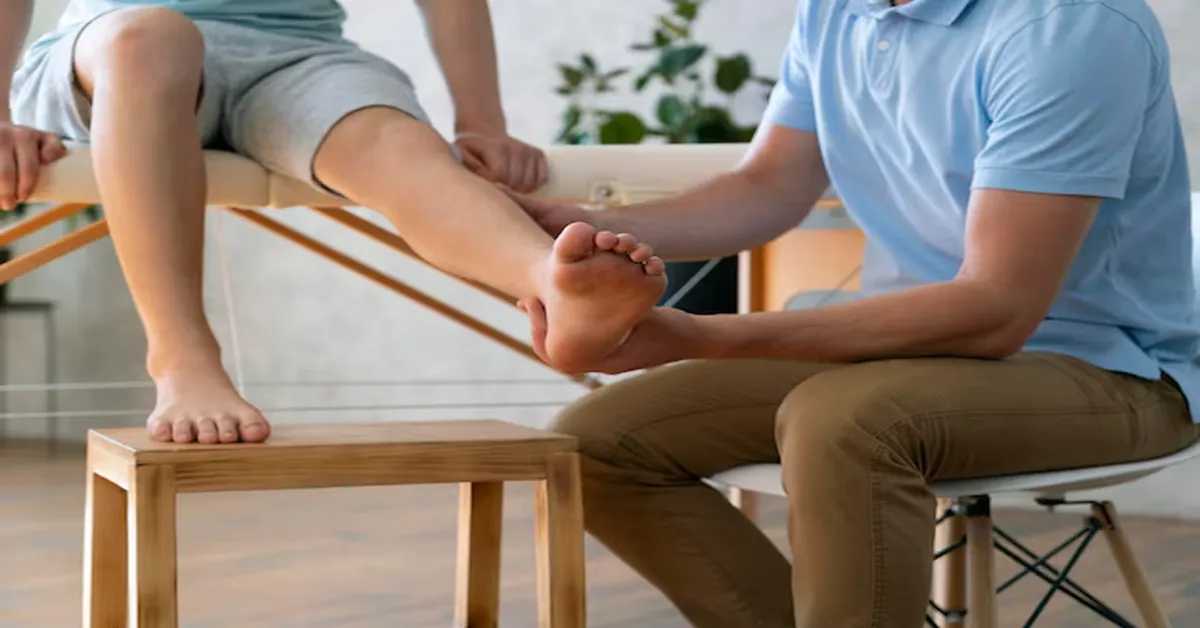Your feet are the foundation of your body, supporting your weight and keeping you mobile. Yet, they are often neglected until problems arise. This is where a foot doctor, or podiatrist, comes in. Whether you’re dealing with heel pain, bunions, or diabetic foot care, a podiatrist can help diagnose, treat, and prevent foot-related conditions.
In this comprehensive guide, we will cover everything you need to know about foot doctors, including their specialties, common foot ailments, treatments, and how to choose the right one for your needs.
What is a Foot Doctor?
A foot doctor, also known as a podiatrist, is a medical professional who specializes in diagnosing and treating conditions related to the feet, ankles, and lower extremities. Podiatrists undergo extensive training, including:
- A Doctor of Podiatric Medicine (DPM) degree
- A residency program focusing on foot and ankle care
- Specialized training in orthopedics, surgery, and sports medicine
Difference Between a Podiatrist and an Orthopedic Surgeon
Many people confuse podiatrists with orthopedic surgeons. While both can treat foot conditions, orthopedic surgeons specialize in musculoskeletal issues across the entire body, whereas podiatrists focus exclusively on foot and ankle health.
Common Foot Problems Treated by Podiatrists
Podiatrists handle a wide range of foot and ankle conditions. Here are some of the most common ones:
1. Plantar Fasciitis
- A leading cause of heel pain
- Caused by inflammation of the plantar fascia, a thick band of tissue at the bottom of the foot
- Treatment options include stretching, orthotics, physical therapy, and, in severe cases, steroid injections
2. Bunions
- A bony bump that forms at the base of the big toe
- Can cause pain and misalignment of toes
- Treated with orthotics, lifestyle changes, or surgical intervention
3. Ingrown Toenails
- Occur when the edge of the toenail grows into the surrounding skin, leading to pain and infection
- Podiatrists can remove part of the nail or prescribe antibiotics for infection
4. Diabetic Foot Care
- Diabetes can lead to nerve damage (neuropathy) and poor circulation in the feet
- Routine podiatric care helps prevent serious complications like ulcers and infections
5. Achilles Tendinitis
- Inflammation of the Achilles tendon, common in athletes
- Managed through rest, stretching, physical therapy, and sometimes surgery
6. Flat Feet
- A condition where the foot arch collapses, leading to pain and imbalance
- Custom orthotics and physical therapy can help alleviate symptoms
7. Fungal Infections and Athlete’s Foot
- Caused by fungal overgrowth, leading to itching, redness, and cracked skin
- Treated with antifungal medications, proper foot hygiene, and breathable footwear
Treatments and Procedures Performed by Foot Doctors
Podiatrists use various treatments depending on the condition. Some common methods include:
Non-Surgical Treatments
- Orthotic Devices: Custom shoe inserts that provide arch support and correct foot alignment
- Physical Therapy: Exercises to strengthen foot muscles and improve mobility
- Medications: Anti-inflammatory drugs, pain relievers, and antibiotics for infections
- Shockwave Therapy: Used for chronic conditions like plantar fasciitis to stimulate healing
Surgical Treatments
- Bunion Surgery: To realign the toe joint and remove bony growths
- Hammer Toe Correction: Adjusts toe deformities
- Heel Spur Removal: Eliminates painful bony growths in the heel
- Ingrown Toenail Removal: Prevents recurring infections
When Should You See a Foot Doctor?
Ignoring foot pain or abnormalities can lead to long-term issues. Consider visiting a podiatrist if you experience:
- Persistent foot or ankle pain
- Swelling, redness, or infection signs
- Difficulty walking or standing for long periods
- Foot deformities like bunions or hammertoes
- Diabetic-related foot problems
How to Choose the Right Foot Doctor
Finding the right podiatrist is essential for effective treatment. Here are some tips:
1. Check Credentials and Experience
- Ensure they have a Doctor of Podiatric Medicine (DPM) degree
- Look for board certification by the American Board of Podiatric Medicine
- Check if they have specialized experience in your condition
2. Read Reviews and Ask for Recommendations
- Check online reviews from real patients
- Ask family, friends, or your primary care doctor for recommendations
3. Consider the Location and Accessibility
- Choose a podiatrist with a conveniently located clinic
- Ensure the office has modern equipment and a comfortable environment
4. Insurance and Costs
- Confirm if they accept your health insurance
- Inquire about treatment costs and payment options
Foot Care Tips for Healthy Feet
Maintaining good foot health is essential for overall well-being. Here are some key tips:
- Wear Proper Footwear: Avoid tight or ill-fitting shoes
- Keep Your Feet Clean and Dry: Prevent infections by maintaining good hygiene
- Moisturize Regularly: Prevent dry, cracked skin
- Trim Toenails Properly: Cut straight across to avoid ingrown nails
- Stretch and Exercise: Keep your feet strong and flexible
- Visit a Podiatrist Regularly: Especially if you have chronic foot issues or diabetes
Conclusion
Your feet deserve the best care, and a foot doctor can help keep them healthy and pain-free. Whether you’re dealing with chronic pain, a sports injury, or diabetic foot issues, a podiatrist provides expert treatment tailored to your needs.
Frequently Asked Questions (FAQs)
1. How often should I see a podiatrist?
If you have no existing foot conditions, an annual checkup is sufficient. However, if you have diabetes or chronic foot problems, more frequent visits may be necessary.
2. Does insurance cover podiatry visits?
Most insurance plans cover podiatry services, especially for medical conditions. Cosmetic foot procedures may not be covered.
3. What is the difference between a foot doctor and a chiropractor?
A podiatrist specializes in foot and ankle conditions, whereas a chiropractor focuses on spine and joint health, sometimes including foot alignment.
4. Can children see a foot doctor?
Yes, pediatric podiatrists specialize in treating foot conditions in children, including flat feet and walking abnormalities.
5. How can I prevent foot pain?
Wearing supportive shoes, stretching regularly, and maintaining a healthy weight can help prevent foot pain.
If you’re experiencing foot discomfort, don’t wait—schedule an appointment with a podiatrist today!









